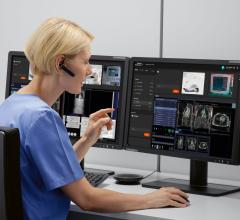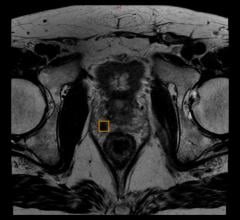
Greg Freiherr has reported on developments in radiology since 1983. He runs the consulting service, The Freiherr Group.
Positron Imaging and the Future of Radiology
Wielding an assortment of high-energy photons, ultrasonic waves and radiofrequencies, radiology has made a practice of peeling back virtual tissue to guide the management of patients. Positron emission tomography (PET) is the ultimate expression of this and an example of what radiology must do to succeed.
With PET you can see cellular function to differentiate healthy from cancerous cells; determine the viability of heart tissue; document if a drug is having the desired effect.
No, it’s not perfect. Its hybridization with computed tomography (CT) attests to this. PET’s recent alliance with magnetic resonance (MR) underscores its shortcomings. But it also reveals PET’s strengths. The ability to hybridize, to overcome weakness, makes it an example of what radiology must become in the future.
By design, PET combines with best-of-breed technologies to go beyond the state-of-the-art; the whole becoming greater than the sum of the parts; one part stepping in to capitalize on specific opportunities.
Pundits believe PET/CT will remain the procedure of choice for staging and following up cancers well characterized by CT. It will likely continue as the best way to monitor patient response to some treatments. But PET/MR is being suggested for cases where MR is inherently better than CT. Already the groundwork for future clinical applications is taking shape, buoyed by peer-reviewed research done on prototypes.
• PET/MR may be more sensitive than PET/CT at detecting liver metastases. (Donati OF, Hany TF, Reiner CS, et.al. Value of retrospective fusion of PET and MR images in detection of hepatic metastases: comparison with 18F-FDG PET/CT and Gd-EOB-DTPA-enhanced MRI. J Nucl Med. 2010 May; 51(5):692-9. Epub 2010 Apr 15.)
• The ability of MRI to visualize the hemodynamics of gliomas combined with PET’s ability to interrogate glioma physiology could provide an early indicator of tumor response to therapy, particularly when antiangiogenic agents are involved. (Gerstner ER, Sorensen AG, Jain RK, et.al. Advances in neuroimaging techniques for the evaluation of tumor growth, vascular permeability and angiogenesis in gliomas, Curr Opin Neurol. 2008 Dec; 21(6):728-35.)
• Diffusion tensor imaging with simultaneous PET may help in the treatment planning of patients with brain tumors. (Boss A, Kolb A, Hofmann M, et.al. Diffusion tensor imaging in a human PET/MR hybrid system. Invest Radiol. 2010 May; 45(5):270-4.)
A year ago, disruptions in the supply of technetium, the backbone of single photon emission computed tomography (SPECT), had undercut conventional nuclear medicine, causing some to promote PET/CT in its place, if for no other reason than the certainty of its radioisotope supply. Suddenly, with the unveiling at RSNA 2010 by Siemens and Philips of integrated PET/MR scanners, the equation changed. Now the advocates of PET talk about teaming with MR in cardiovascular imaging to go beyond what can be achieved with conventional nuclear cardiology, citing published research that shows combining PET and cardiac MR might enable the detection and differentiation of vulnerable plaques in the coronaries. (Pichler BJ , Kolb A , Nägele T, PET/MRI: Paving the Way for the Next Generation of Clinical Multimodality Imaging Applications. J Nucl Med 2010 March 51(3) 333-336.)
It is this potential to recombine, adapt and overcome challenges and, thereby, go beyond current capabilities that spurs the optimism of PET advocates. The evaluation of degenerative diseases, infections, inflammation and metabolic diseases are among the possibilities that lie ahead for PET – and illuminate the future of radiology.


 April 10, 2024
April 10, 2024 





![(A) PET images of [68Ga]Ga-DOTA-ZCAM241 uptake at baseline and 3, 7, and 12 days after injection as inflammatory arthritis developed in single representative individual mouse. Images are normalized to SUV of 0.5 for direct comparison between time points. (B) CD69 immunofluorescence Sytox (Thermo Fisher Scientific) staining of joints of representative animals during matching time points.](/sites/default/files/styles/feed_medium/public/PET%20Tracers.jpeg?itok=P5Di6MIe)


